Regular readers of my Wednesday’s Blogger Round-Up will already know Carolyn Schonafinger from Holidays to Europe, an Australian based business passionate about sharing their European travel expertise and helping travellers to experience the holiday in Europe they have always dreamed of. I recently quoted from her post on cycling on the Austrian lakes. Carolyn has kindly agreed to write a guest post about an area she knows well in the south of France – Languedoc – which I have also visited (and enjoyed) on several occasions. Enjoy!
Discovering the real south of France
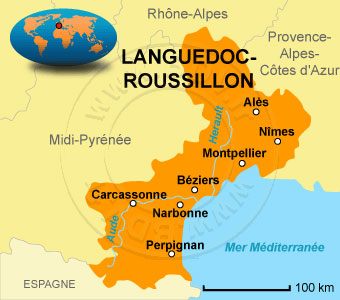
Aah, the south of France. Over 300 days of sunshine per year, endless stretches of Mediterranean coastline, unspoilt countryside, bustling markets and untouched medieval villages. I’m talking about Provence, right? Wrong! This is Languedoc, the real south of France.
Less well known than its famous neighbour, particularly by Australians, Languedoc offers the visitor the quintessential rural French experience. Its strong history of wine making (it’s the largest wine producing region in the world) is reason enough to visit but there are plenty of other reasons, too. Our focus below is on the Aude and Herault departments of Languedoc.

Carcassonne and its famous medieval castle is a ‘must-visit’ site in the region. The UNESCO World Heritage listed fortified city sits above the ‘new’ town and you can easily spend a few hours wandering the cobbled pathways inside the medieval walls and exploring the castle itself. Numerous shops, restaurants and cafes are now housed inside the walls and there are fantastic views towards the Pyrenees from the castle walls.
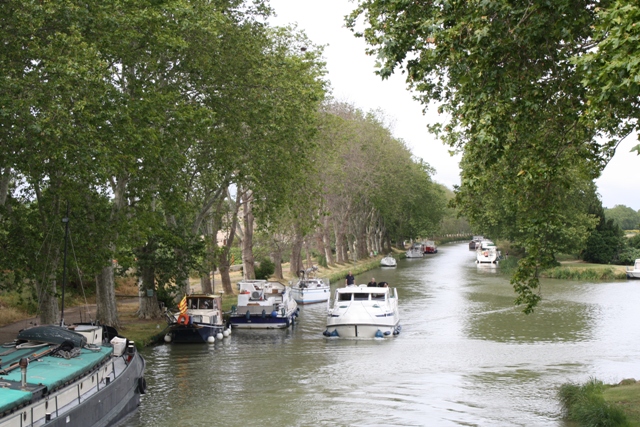
Another UNESCO World Heritage site in Languedoc is the Canal du Midi. Stretching for 240km, the Canal was built in the 17th Century as a means of transporting goods between the Mediterranean and Atlantic coasts. These days, the only boats you’ll find on the Canal are pleasure craft. An afternoon boat ride on the Canal du Midi is a wonderful way to while away a couple of hours, taking in the stunning scenery and marvelling at the workings of the locks which raise and lower the water level as required. Canal-side villages like Homps and Trebes offer the perfect location to dine alfresco alongside this unique waterway.
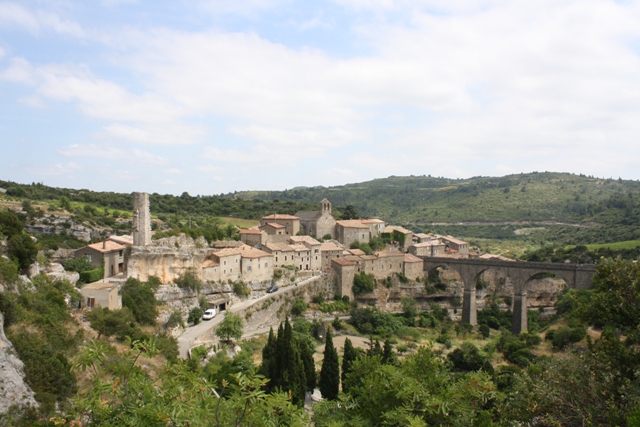
The village of Minerve was a strategic base for the Cathars during the crusade against them in the early 13th Century. It was also an important stopover for the pilgrims on their way to Santiago de Compostelle in Spain during the medieval times. The small Musee Hurepel is well worth a visit. Sixteen scenes, complete with intricately made clay figurines, depict the story of the Cathars’ struggle against the Crusaders. As a member of France’s ‘Most Beautiful Villages’ alliance, Minerve is definitely worth a visit.
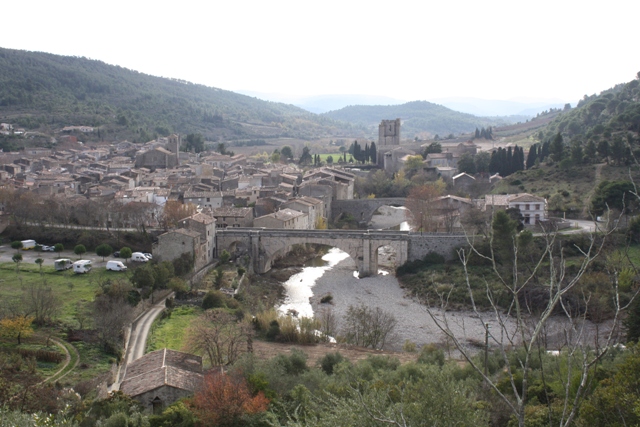
The Fontfroide Abbey, along with the abbeys of Fontcaude and Lagrasse, can all be found in this region, too. The ruined, but still spectacular, fortresses of Peyrepertuse, Montsegur and Queribus are the scenes of the last desperate struggles of the Cathar rebels. A visit to the ruins of Lastours is also worthwhile, with its four small castles (now in ruins) keeping watch over the valley below.
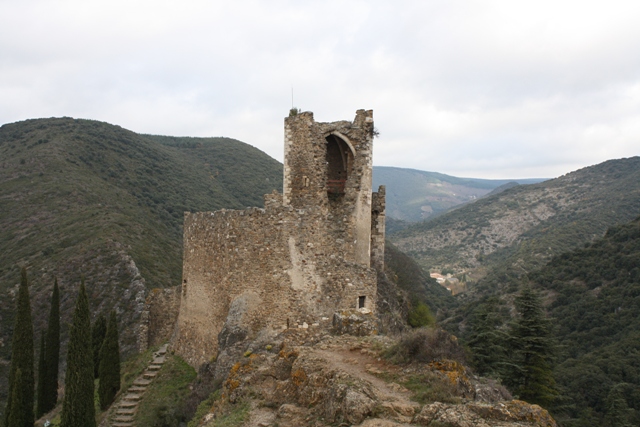
The Mediterranean coastline in Languedoc stretches from Collioure, not far from the Spanish border, to Espiguette near Provence. Languedoc’s beaches tend to be wider and sandier than those in Provence and they vary from busy tourist sites to intimate coves. Some of the more popular beaches include Sete, Gruissan, Canet and Narbonne Plage. Europe’s largest nudist colony can also be found in Languedoc at Cap d’Agde.
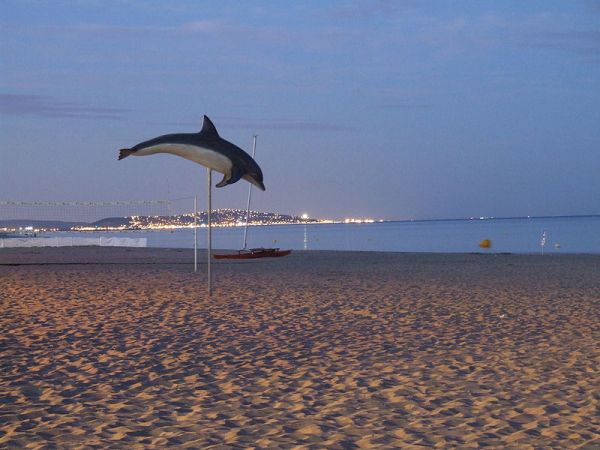
Narbonne dates back to pre-Roman times and was once the capital of the Languedoc. A visit to the beautiful covered market, Les Halles, will have your mouth watering. The quality of food, from butchers through fishmongers and everything in between, is excellent. The Narbonne market operates from Monday to Saturday, and on Thursday and Sunday you’ll also find a huge market on both sides of the Robine Canal, a tributary of the Canal du Midi. Whilst in Narbonne, make sure you visit the magnificent cathedral, see the Archbishop’s Palace (now the Town Hall) and enjoy a stroll along the Canal du Robine.

To make the most of your holiday in Languedoc, why not stay in your own home-away-from-home in a holiday house like Castel Grand Rue? The three-storey, three-bedroom, traditional French house is right in the heart of Olonzac, a market town in the Minervois region. The sunny rooftop terrace makes the ideal place to dine on fresh local produce and sip the local wines after a busy day of exploring in Languedoc. Furnished to a high standard with everything you could possibly need to feel at home, the Australian-owned holiday house fits the bill for location and comfort.
Carolyn Schonafinger is the editor of www.HolidaysToEurope.com.au where she blogs about her travels around Europe




This is one of my favourite parts of France. To me it makes a good budget option for those who can’t afford Provence. We took our daughter when she was seven and she had a blast. There is a very good dinosaur museum a bit further south (I think the town is called Esperanza? or something like that anyway). If I ever run away from home there’s a good chance I’ll be hiding out in Collioure, further south again.
Great post Carolyn!
Hi Jo,
I’m glad you enjoyed the post. This part of France really does offer so much for all ages. As well as the dinosaur museum there’s also an Australian wildlife park (!!) near Carcassonne, and an African Safari park in the region, so there’s plenty to keep the kids amused if it’s not warm enough to swim in the beautiful Mediterranean.
I hope you get a chance to visit Languedoc again one day – without having to run away from home!
Fabulous — made me want to go there immediately!
Glad to hear it, Susan! Hope you do get to visit Languedoc soon.
I am looking for somewhere new for 2 weeks in 2015. Looks like I’ll be checking out your recommended accommodations.
Lovely area.